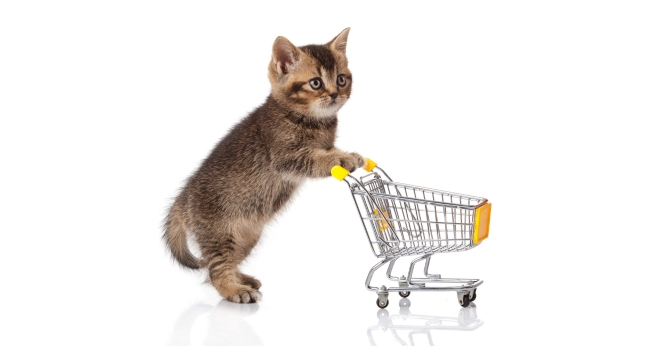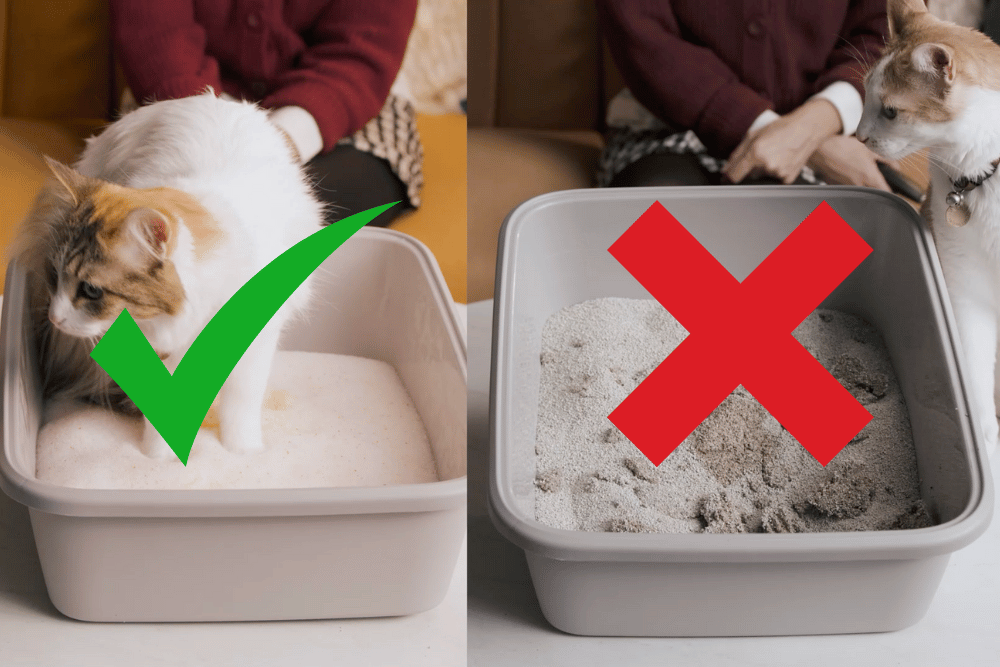When it comes to choosing the right cat litter, the options can be overwhelming. Two of the most popular types are silica and clay litter. Here we’ll dive into the differences between these two types, highlighting why Genius Litter, a premium silica litter with a built-in health indicator, is the superior choice for both you and your feline friend.
What is Silica Litter?
Silica litter, also known as crystal litter, is made from silicon dioxide. These are the same crystals you find in those small packets labeled “Do not eat” in new shoe boxes or bags. The crystals are highly absorbent and control odors effectively, making them a top choice for many cat owners.
What is Clay Litter?
Clay litter, on the other hand, is made from natural clay minerals. There are two main types of clay litter: non-clumping and clumping. Non-clumping clay litter absorbs urine, but doesn’t form clumps, while clumping clay litter forms solid clumps when it comes into contact with moisture, making it easier to scoop.
Weight and Usage
One of the most significant differences between silica and clay litter is the weight. Clay litter is much heavier, making it cumbersome to carry and pour. Additionally, because clay litter is less absorbent, you need to use more of it. This means more frequent purchases and more heavy lifting. Silica litter, like Genius Litter, is lightweight and easy to handle. A small amount goes a long way, reducing the frequency of refills and making it more economical in the long run.
Odor Control
Odor control is a crucial factor in choosing cat litter. Clay litter can become overwhelmed with the smell of ammonia from urine, especially if it’s not changed frequently. The heavy, earthy scent of wet clay can also be unpleasant. Silica litter, however, excels in odor control. The crystals trap moisture and lock in odors, keeping the litter box fresher for longer periods. Genius Litter goes a step further with its health indicator feature, which changes color based on your cat’s urine pH level, giving you an early warning if there’s a potential health issue.
Dust and Tracking
Clay litter tends to produce a lot of dust, which can be a problem for both cats and their owners. Dust can cause respiratory issues and trigger allergies. Additionally, clay litter can stick to your cat’s paws, leading to tracking throughout the house. Silica litter is virtually dust-free, making it a healthier option for your home environment. Genius Litter's low tracking formula ensures that crystals stay in the box, not on your floors, keeping your living space clean.
Maintenance
Maintaining a litter box with clay litter can be a messy and time-consuming task. Wet clay can stick to the box, making it difficult to clean. Regular scooping is essential to prevent odors and maintain hygiene, but it can be a hassle. Silica litter simplifies maintenance. The crystals absorb moisture on contact, and with Genius Litter’s health indicator, you get an added layer of convenience and peace of mind. Simply scoop out solid waste, stir the crystals, and replace the litter less frequently than you would with clay.
Health Benefits
Perhaps the most compelling reason to choose silica over clay is the health benefits. Genius Litter’s health indicator feature is a game-changer. By changing color based on your cat’s urine pH level, it can alert you to potential health issues such as urinary tract infections or kidney problems. Early detection can lead to timely veterinary care, ensuring your cat stays healthy and happy.
Conclusion
When comparing silica and clay litter, the advantages of silica are clear. Silica litter, like Genius Litter, offers superior odor control, less dust, minimal tracking, and easier maintenance. It’s lightweight, environmentally friendlier, and, with the added health indicator feature, it provides invaluable insights into your cat’s well-being. Make the switch to Genius Litter today and experience the benefits of a cleaner, healthier, and more convenient litter solution. Your cat—and your home—will thank you.





